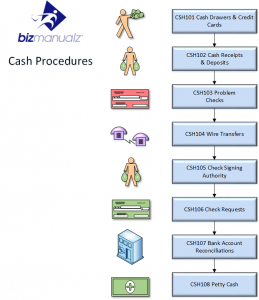Adjusting entries are all about making sure that your financial statements only contain information that is relevant to the particular period of time you’re interested in. At some point, you’ll want to make sense of all those financial transactions you’ve recorded in your ledger. If you’re using a dedicated bookkeeping system, all of this work is being done for you in the backend.
Once they do so, they pass adjusting entries which help create the adjusted trial balance. In our detailed accounting cycle, we just finished step 5 preparing adjusting journal entries. We will use the same method of posting (ledger card or T-accounts) we used for step 3 as we are just updating the balances. Remember, you do not change your journal entries for posting — if you debit in an entry you debit when you post.
When you prepare an adjusted trial balance, you can either:
However, this does not mean that there are no errors in a company’s accounting system. For example, transactions classified improperly or those simply missing from the system still could be material accounting errors that would not be detected by the trial balance procedure. A trial balance is a bookkeeping worksheet in which the balances of all ledgers are compiled into debit and credit account column totals that are equal. A company prepares a trial balance periodically, usually at the end of every reporting period. The general purpose of producing a trial balance is to ensure that the entries in a company’s bookkeeping system are mathematically correct.
We follow ethical journalism practices, which includes presenting unbiased information and citing reliable, attributed resources. Much of our research comes from leading organizations in what is work in process inventory the climate space, such as Project Drawdown and the International Energy Agency (IEA). Carbon Collective is the first online investment advisor 100% focused on solving climate change.
What is an adjusted trial balance?
Net income information is taken from the income statement, and dividends information is taken from the adjusted trial balance. The statement of change in equity always leads with beginning retained earnings. Beginning retained earnings carry over from the previous period’s ending retained earnings balance. Since this is the first month of business for KLO, there is no beginning retained earnings balance. Notice the net income of $5400 from the income statement is carried over to the statement of change in equity. Dividends are taken away from the sum of beginning retained earnings and net income to get the ending retained earnings balance of $5300 for the current month.
Gymnastics Star Simone Biles Returning to Competition in August in … – Asharq Al-awsat – English
Gymnastics Star Simone Biles Returning to Competition in August in ….
Posted: Wed, 28 Jun 2023 15:16:08 GMT [source]
While the definition of the document is relatively straightforward, you’re probably thinking – what is the purpose of the adjusted trial balance? Well, the purpose of preparing an adjusted trial balance is to ensure that the financial statements for the period are accurate and up-to-date. It corrects any errors to make the statements compatible with the requirements of an applicable accounting framework.
Adjusted Trial Balance Example
You will notice there is already a debit balance in this account from Transaction 4 in Chapter 2. The $1500 debit is added to the $5500 debit to get a final balance of $7000 (debit). This is posted to the Revenue T-account on the credit side (right side).

The accounting equation is balanced, as
shown on the balance sheet, because total assets equal $29,965 as
do the total liabilities and stockholders’ equity. Looking at the asset section of the balance sheet, Accumulated Depreciation–Equipment is included as a contra asset account to equipment. The accumulated depreciation ($75) is taken away from the original cost of the equipment ($3,500) to show the book value of equipment ($3,425). The accounting equation is balanced, as shown on the balance sheet, because total assets equal $29,965 as do the total liabilities and stockholders’ equity. This is posted to the Accounts Receivable T-account on the debit side (left side).
How to prepare an adjusted trial balance?
A trial balance enlists all balances from general ledger accounts at a particular time. It includes at least three columns, including the account name, debit, and credit side. Each item in the trial balance also consists of its balance on its relative debit or credit column. Usually, it enlists balances related to assets, liabilities, equity, income, and expenses. While every company maintains a record of its account balances in its general ledger, financial statements can only be complete and accurate if all accounts are prepared accurately.
The unadjusted trial balance is simply the balance of all general ledger accounts for an accounting period. It is run to ensure all debits match all credits for the accounting period. From this report, in conjunction with consultations with the appropriate company personnel, the adjusting entries can be prepared.
From this information, the company will begin constructing each of the statements, beginning with the income statement. The statement of retained earnings will include beginning retained earnings, any net income (loss) (found on the income statement), and dividends. The balance sheet is going to include assets, contra assets, liabilities, and stockholder equity accounts, including ending retained earnings and common stock.
Former Trump lawyer Rudy Giuliani interviewed in special counsel’s election probe – AOL
Former Trump lawyer Rudy Giuliani interviewed in special counsel’s election probe.
Posted: Wed, 28 Jun 2023 15:53:02 GMT [source]
Is an adjusted trial balance a debit or credit?
Trial balance excludes entries like accrued expense. In the books of accounts it is recorded in a way that the expense account is debited and the accrued expense account is credited.
